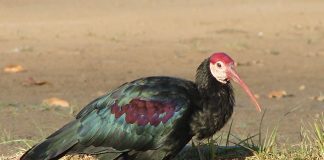
Photo: Supplied
Apple orchards in the coastal regions of the Western Cape, such as Elgin, are affected to a greater extent by rising winter temperatures than those in the colder inland regions such as the Koue Bokkeveld.
The question we have been trying to answer through our research is whether this change in temperature has increased the risk of apples acquiring fungal diseases.
Apple scab, one such disease, is caused by the fungus Venturia inaequalis, commonly known as Fusi. It is responsible for high economic losses to the apple export industry due to the blemishes and deformities it causes on the fruit.
The fungus overwinters in fallen leaf debris, where it reproduces sexually to form round, spore-bearing structures, called pseudothecia, within the leaf tissue. When conditions are favourable for scab infection in spring (16°C to 20°C, during rainy periods), the spores are discharged, causing infection in young leaves and developing flowers and fruit.
Regional variation
In 2017, Dr Trevor Koopman of the Agricultural Research Council made an intriguing discovery using genetic fingerprinting of apple scab fungi during his studies in the Fruit and Postharvest Pathology Research Programme led by Dr Cheryl Lennox at Stellenbosch University.
Koopman found that the fungal populations in Elgin were distinctly different from those collected in the mountainous Koue Bokkeveld region. Such differences in genetic fingerprints point to a potential adaptation of the fungus to the new climatic conditions of higher winter temperatures.
In a recent study published in the journal Plant Disease, Dr Saskia von Diest analysed the various Fusi phenotypes (visible characteristics) in an attempt to answer the question, “Is the development of the overwintering structures of the fungus affected differently by the changing climatic conditions found in the two regions?”
Using a microscope, Von Diest counted the number of pseudothecia present in the overwintering fungus, and found that the apple scab strain in Elgin produced fewer pseudothecia than the strain originating in the Koue Bokkeveld.
The fungus does not need to have as many overwintering spore structures in the warmer region, where it can survive asexually using less energy. The warmer climate enables asexual spores, which are not as winter-hardy, to overwinter. So with less effort, the fungus can cause the same amount of infection.
Elgin’s warmer winters appear to have caused the selection of this fungal strain, demonstrating the high plasticity of the genetic make-up of the fungus.
These rapid changes are brought about by naturally occurring mutants and sexual recombination in the overwintering pseudothecia, and enable the fungus to adjust to environmental conditions.
This is unlike its host, the domesticated apple tree, which cannot adapt so easily to the new conditions, resulting in incomplete leaf drop and uneven flowering.
Effective control
Since an apple orchard is typically planted with a single apple variety (monoculture), fungal infection occurs more readily.
Breeding efforts for new Fusi-resistant apple varieties focused largely on a single dominant host resistance gene. This turned out to be the wrong approach, as single genes are too easily overcome by the rapidly evolving Fusi, as Koopman showed in a recent study funded by Hortgro Science.
Together with Dr Andrea Patocchi of Agroscope in Switzerland, he established an international monitoring project to note which races of the fungus occur in the Western Cape.
These races indicate which resistance genes are rendered ineffective by the pathogen due to its avoidance of selective resistance mechanisms.
To control apple scab effectively, farmers will have to reduce the overwintering stages of the disease-causing fungus; this requires implementing an integrated management approach involving orchard sanitation (leaf shredding), the effective use of fungicides, and weather monitoring (using ileafweather.com) to predict the risk of apple scab infection, as well as breeding varieties with multiple resistance genes.
- Sources: Koopman, TA, Meitz-Hopkins, JC, Bester-Van der Merwe, AE, Tobutt, KR, Bester, C, and Lennox, CL. 2017. ‘Genetic Diversity and Gene Flow of Four South African Venturia inaequalis (Apple Scab) Populations’. Phytopathology 107: 455-462. DOI: 10.1094/PHYTO-07-16-0279-R
- Von Diest, SG, Meitz-Hopkins, JC, Rabie, AA, MacHardy, WE, and Lennox, CL. 2019. ‘Temperature influence on pseudothecia development stages of Venturia inaequalis in the Western Cape of South Africa’. Plant Disease [in press]. DOI: 10.1094/PDIS-04-19-0706-RE.
- Email Dr Julia Meitz-Hopkins at [email protected].











